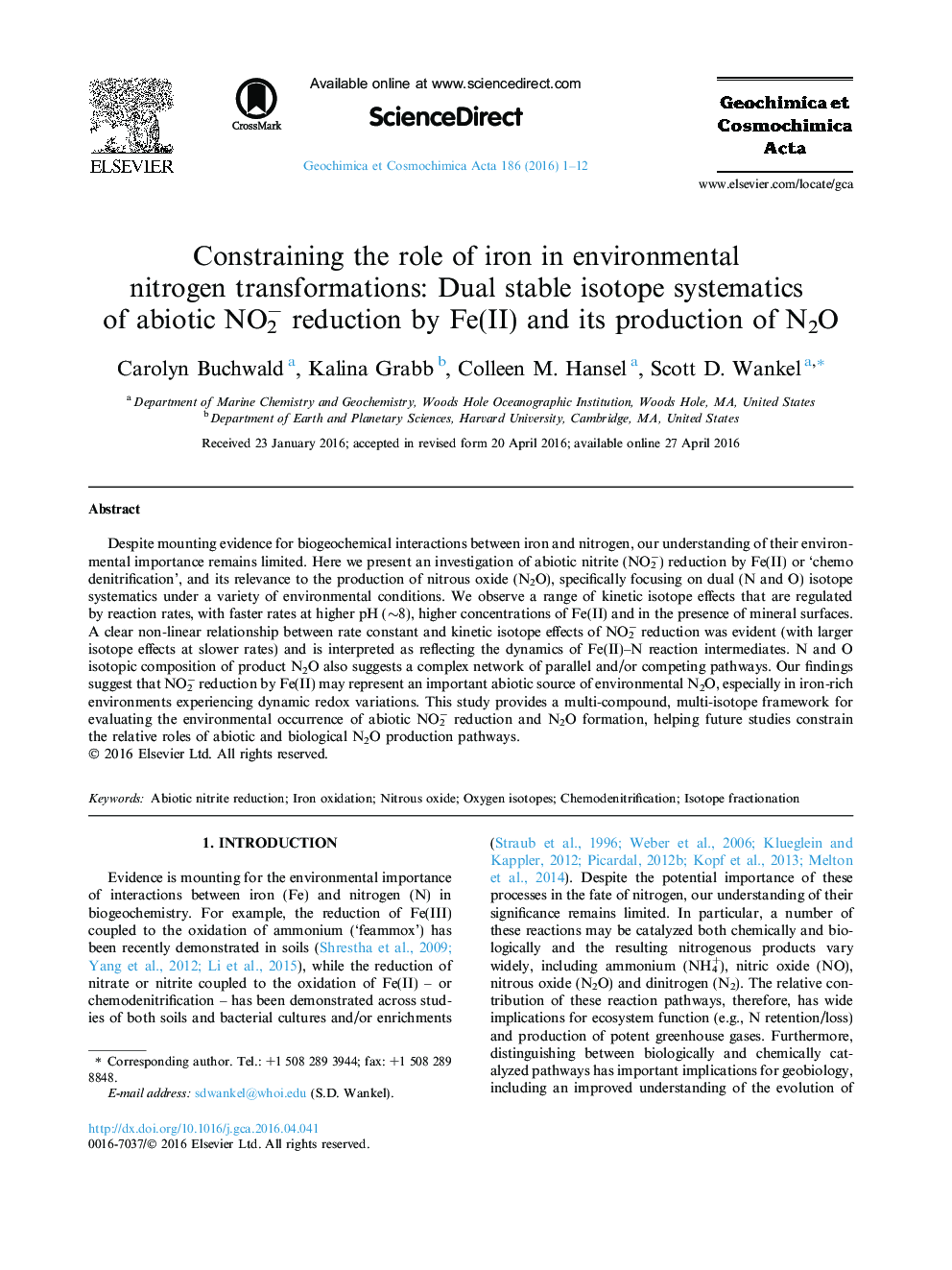| Article ID | Journal | Published Year | Pages | File Type |
|---|---|---|---|---|
| 6437275 | Geochimica et Cosmochimica Acta | 2016 | 12 Pages |
Despite mounting evidence for biogeochemical interactions between iron and nitrogen, our understanding of their environmental importance remains limited. Here we present an investigation of abiotic nitrite (NO2â) reduction by Fe(II) or 'chemodenitrification', and its relevance to the production of nitrous oxide (N2O), specifically focusing on dual (N and O) isotope systematics under a variety of environmental conditions. We observe a range of kinetic isotope effects that are regulated by reaction rates, with faster rates at higher pH (â¼8), higher concentrations of Fe(II) and in the presence of mineral surfaces. A clear non-linear relationship between rate constant and kinetic isotope effects of NO2â reduction was evident (with larger isotope effects at slower rates) and is interpreted as reflecting the dynamics of Fe(II)-N reaction intermediates. N and O isotopic composition of product N2O also suggests a complex network of parallel and/or competing pathways. Our findings suggest that NO2â reduction by Fe(II) may represent an important abiotic source of environmental N2O, especially in iron-rich environments experiencing dynamic redox variations. This study provides a multi-compound, multi-isotope framework for evaluating the environmental occurrence of abiotic NO2â reduction and N2O formation, helping future studies constrain the relative roles of abiotic and biological N2O production pathways.
